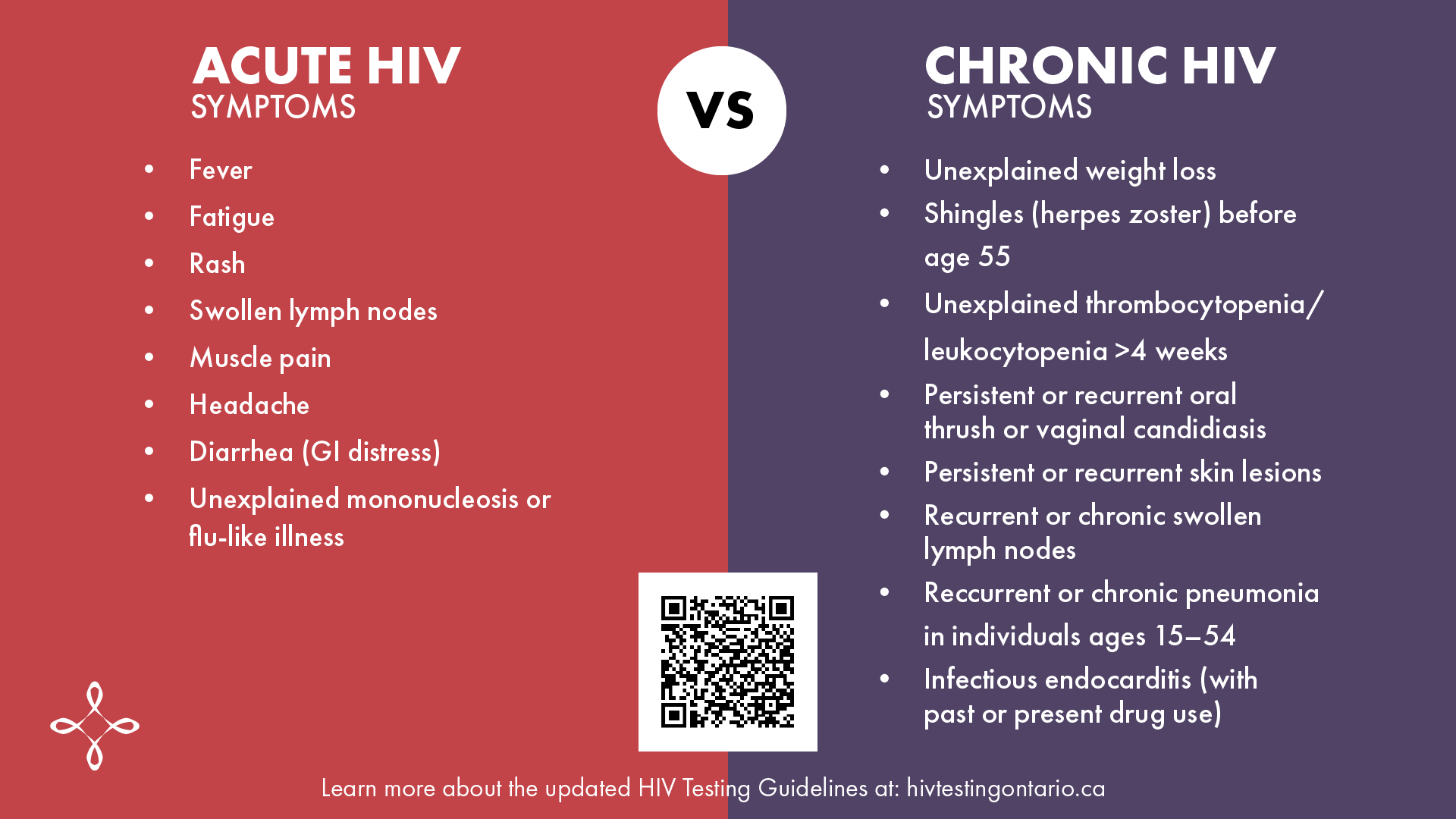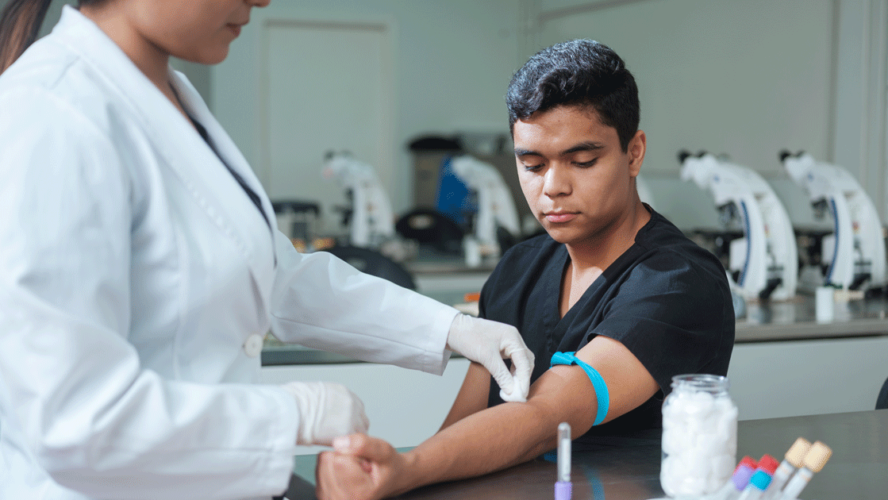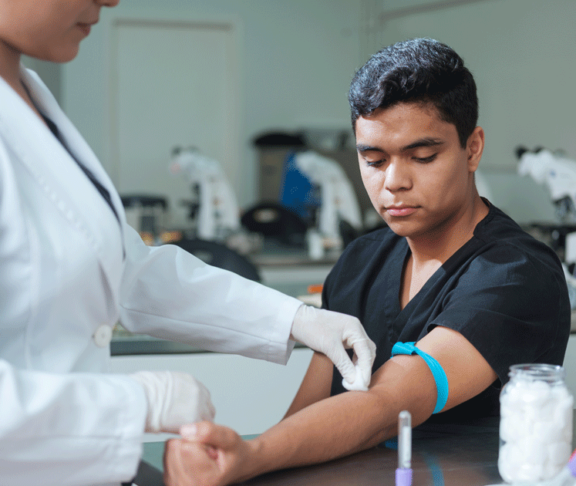A shorter testing window, quicker linkage to care, and improved awareness of risks and symptoms will reduce HIV transmission in Ontario.
HIV (the Human Immunodeficiency Virus) attacks the body’s immune system and, if untreated, can lead to AIDS, a life-threatening condition. While incredible progress has been made in the fight against HIV, there were still 485 new cases in Ontario in 2021, concentrated in a few populations.
“Where it once was a death sentence, HIV has become a chronic, manageable condition,” says Dr. Kevin Woodward, Executive and Medical Director of HQ, a sexual and mental health clinic in Toronto. “Today, most people living with HIV in Canada are diagnosed, virally suppressed — meaning they cannot pass on the virus to others — and on a treatment plan of one pill a day, with minimal side effects. But there are still people we are not reaching in time.”
We have to make sure that more people who are living with HIV get diagnosed early and on treatment quickly. We believe the updated guidelines will help make this happen.
In spring of 2023, the Ontario Guidelines for Providers Offering HIV Testing was published, providing crucial guidance to health care practitioners about how to close the gap by catching infections early.
Jean Bacon, Executive Director of the Ontario HIV Treatment Network — a key collaborator on Ontario’s new guidelines — explains, “We have to make sure that more people who are living with HIV get diagnosed early and on treatment quickly. We believe the updated guidelines will help make this happen.”
Identifying undiagnosed HIV
To diagnose people early, health care workers must be able to recognize the signs and symptoms of both acute and chronic HIV infection, offer testing, connect people who test positive quickly to care, and connect those who test negative and are at high-risk to HIV prevention options.
“Because HIV is not the health crisis it once was, it may not be top of mind when practitioners are assessing a patient,” says Bacon. “Many of the symptoms of HIV are also symptoms of other viral illnesses. As a result, many people with HIV are diagnosed late in the course of infection when they are very ill — and when the virus has already damaged their immune system and possibly been passed unknowingly to other people.”
Providers should also be aware that new HIV diagnoses are concentrated in a small number of Ontario populations, including: gay, bisexual, and other men who have sex with men; African, Caribbean, and Black communities; Indigenous communities; newcomers; people who use drugs; and cis and trans women, including those from the communities above, who face systemic and social inequities and are more likely to be exposed to HIV through a sexual or drug-using partner. Not everyone in these populations is at risk, so it’s important for providers to help people understand and assess their own risk, and decide how frequently they should be tested.
By identifying both new and chronic undiagnosed HIV infections in the population, we can effectively eliminate new HIV transmissions in Ontario.
The updated testing guidelines are rooted in Ontario’s commitment to the United Nations’ 95-95-95 targets (that by 2030, 95 per cent of people living with HIV are diagnosed, 95 per cent of those diagnosed are on treatment, and 95 per cent of those on treatment are virally suppressed).
“These targets challenge Ontario to close the gaps in HIV testing, care and treatment,” says Bacon. “To meet the targets, we have to be much more proactive in finding people with undiagnosed HIV — which means more frequent testing for people at high risk.”
Understanding risk and prevention options
People at increased risk of HIV should be tested at regular intervals. The guidelines recommend annual testing for anyone who is sexually active and a member of a population with higher rates of HIV. For people who are assessed as high-risk (i.e., having frequent unprotected sex with one or more partners whose HIV status is unknown), the guidelines recommend testing every three months. At any of these intervals, a person may be prescribed pre-exposure prophylaxis or “PrEP,” a daily pill which drastically reduces one’s risk of HIV infection. Clinicians interested in learning more about PrEP should visit ontarioprep.ca.
The guidelines also explain the “3Ps” of risk assessment (partners, practices, and protection). These state that a high-risk exposure has occurred when all the following are true:
Partners: a client’s sexual partners are HIV-positive and viremic OR of unknown HIV status and from a population with high prevalence of infection;
Practices: when a client’s practices include anal or vaginal sex and/or injecting drugs; and
Protection: when a client may have had a gap in protection, including no or delayed condom use, a removed or broken condom, or the sharing of injection drug equipment.
“The guidelines ask clinicians to encourage members of at-risk populations to understand the risks, take steps to reduce them, and test frequently,” says Bacon. These strategies will help bring down the prevalence of HIV in the most impacted communities.
The importance of HIV testing
The updated guidelines advocate for HIV testing as the gateway to both treatment and prevention services. People who test positive can be quickly linked to care and treatment — ideally within 72 hours of diagnosis. People who test negative and are at high-risk can be linked to prevention tools, such as PrEP.
New testing technologies have also significantly reduced the window period between when an exposure occurred and when a lab test can detect an HIV infection — it was previously three months but is now only six weeks.
But testing only works if people feel comfortable meeting with their providers and being honest about their risks. The guidelines advocate for a “culturally-responsive” approach to counselling, which considers a client’s culture and comfort levels when discussing sexual and drug-using practices. While there is no one-size-fits-all approach, the guidelines do provide insight into what a culturally-responsive approach might look like.
New testing technologies have also significantly reduced the window period between when an exposure occurred and when a lab test can detect an HIV infection — it was previously three months but is now only six weeks. This shorter window period means that people can know their status more quickly, reducing anxiety. For a person who tests positive, it means they can start treatment, curb the risk of onward transmission, and get back to living a healthy life.
“By identifying both new and chronic undiagnosed HIV infections in the population, we can effectively eliminate new HIV transmissions in Ontario.”
Visit hivtestingontario.ca to learn more about Ontario’s updated guidelines.






